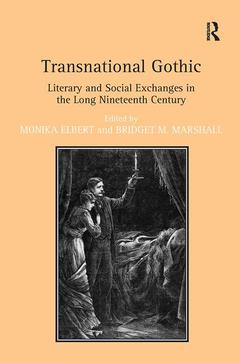Transnational Gothic Literary and Social Exchanges in the Long Nineteenth Century
Auteur : Elbert Monika
Coordonnateur : Marshall Bridget M.

Date de parution : 01-2013
15.6x23.4 cm
Date de parution : 08-2016
15.6x23.4 cm
Thème de Transnational Gothic :
Mots-clés :
Young Man; Agnieszka Soltysik Monnet; American Psychiatric Association; Candace Ward; Nineteenth Century Gothic Fiction; Christian Knirsch; Imperial Gothic; Daniel Robinson; Vice Versa; Diane Long Hoeveler; Charles Brockden Brown; Keith B; Mitchell; British Domestic Fiction; Mary Goodwin; Nineteenth Century British Fiction; Melissa Wehler; American Gothic; Nancy F; Sweet; Fair Imogine; Roland Finger; Gothic Literature; Roxanne Harde; Transatlantic Gothic; SiSilyn Roberts; Financial Gothic; Tamara Wagner; Nineteenth Century Gothic; Fi Frighten; Gothic Fiction; Morgan’s Daughter; Early American Literature; Gothic Criticism; King George III; Gothic Novels; Drawn Back; Weird Form; Gothic Imaginary; Amber Beads



